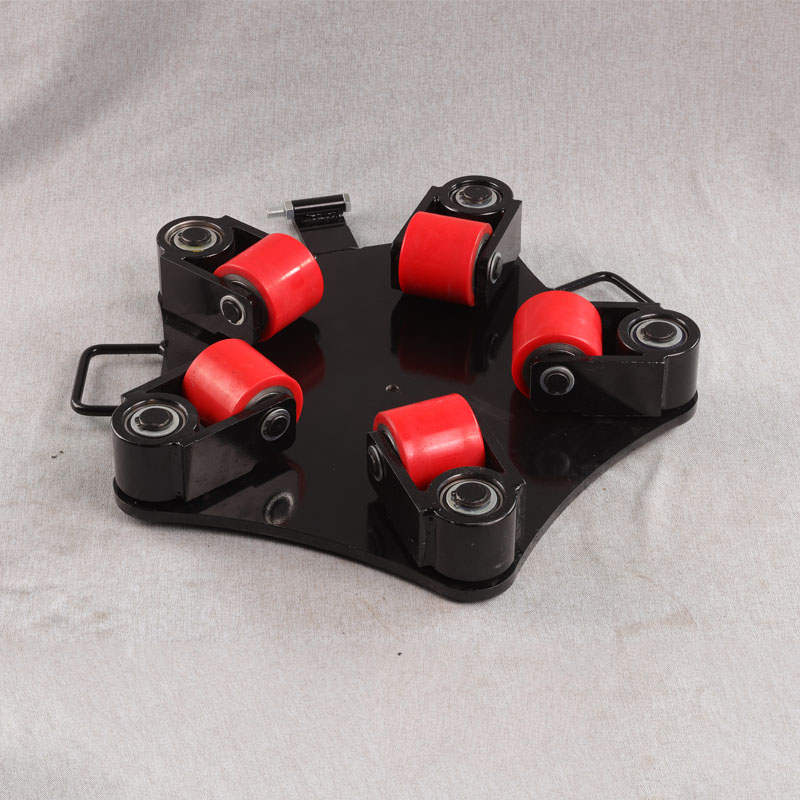Versatile Machinery Dollies for Enhanced Steering and Maneuverability in Various Applications
The Evolution and Application of Steerable Machinery Skates
In various industrial settings, the movement of heavy machinery often presents a significant challenge. Transporting and repositioning equipment like generators, turbines, and large manufacturing tools require a robust solution that can facilitate both ease of movement and precision. Enter steerable machinery skates—a revolutionary innovation designed to enhance the efficiency and safety of heavy equipment transport.
Understanding Steerable Machinery Skates
Steerable machinery skates are specifically designed platforms that allow for the easy transport of heavy machinery across flat surfaces. Typically equipped with robust wheels or rollers, these skates are engineered to support substantial weight while maintaining stability. The unique feature of steerable skates lies in their ability to pivot and turn, enabling users to navigate corners and obstacles with ease. This steering capability is crucial in tight spaces where maneuverability can be a significant concern.
The design often incorporates advanced materials and engineering techniques to ensure strength, durability, and safety. Many models also include built-in hydraulic systems or electric drives that assist in the movement of extremely heavy loads, reducing the physical strain on personnel. Furthermore, most skates are adjustable, allowing them to accommodate machinery of various sizes and weights.
Applications in Industry
Steerable machinery skates find applications in a plethora of industries, including manufacturing, construction, and aerospace. In manufacturing, these skates are invaluable for moving heavy equipment between production lines. Rather than relying on cranes or forklifts, which may be limited by height or space constraints, companies can utilize skates to reposition machines seamlessly.
In the construction industry, steerable skates are used to transport materials and equipment to different locations on a site. For instance, large cement mixers or prefabricated slabs can be moved with greater ease, significantly improving productivity. Similarly, the aerospace sector benefits from steerable skates during assembly and maintenance operations, where large components must be moved with precision without risking damage or delays.
steerable machinery skates

The healthcare field is also seeing innovation through the use of these skates, particularly in the movement of heavy hospital equipment like MRI machines and surgical tables. With steerable skates, hospitals can ensure that these vital machines are relocated quickly and safely, minimizing disruption to patient care.
Benefits of Using Steerable Skates
The use of steerable machinery skates offers numerous advantages. Primarily, they greatly enhance productivity by reducing the time required to move heavy machinery. This efficiency translates to cost savings as equipment downtime is minimized. Additionally, steerable skates improve safety. By reducing the need for manual lifting and the risk of injury associated with moving heavy items, companies can protect their workforce from potential accidents.
Moreover, the precision offered by steerable skates allows for accurate positioning of machinery, which is essential in ensuring that equipment works effectively in its designated area. This is particularly important in settings where alignment plays a critical role, such as assembly lines or precision manufacturing environments.
Conclusion
As industries continue to evolve and demand for efficient machinery transport grows, steerable skates will undoubtedly play an essential role in shaping the future of heavy equipment logistics. Their innovative design not only addresses the challenges associated with moving heavy machinery but also emphasizes safety and productivity.
Whether it’s on a construction site, in a manufacturing facility, or within a hospital, the evolution and application of steerable machinery skates represent a significant advance in how organizations manage their operations. By investing in this technology, businesses can ensure they remain competitive and effective in a rapidly changing industrial landscape. As we look to the future, the continued development of steerable machinery skates is likely to unlock even greater possibilities in the realm of heavy equipment transport.
-
Unlock Seamless Relocation with Our Heavy Equipment Moving ExpertiseNewsJun.06,2025
-
Unleash Unrivaled Flexibility with Our Adjustable Gantry CraneNewsJun.06,2025
-
Unleash Heavy-Duty Efficiency with Our Industrial Gantry Crane SolutionsNewsJun.06,2025
-
Revolutionize Steel Handling with Our Magnetic Lifter RangeNewsJun.06,2025
-
Master Equipment Mobility with Premium Machinery Mover SolutionsNewsJun.06,2025
-
Elevate Your Material Handling with Magnetic Lifter TechnologyNewsJun.06,2025
-
YS Permanent Lifting Magnets: The Smarter Way to Handle SteelNewsMay.22,2025
